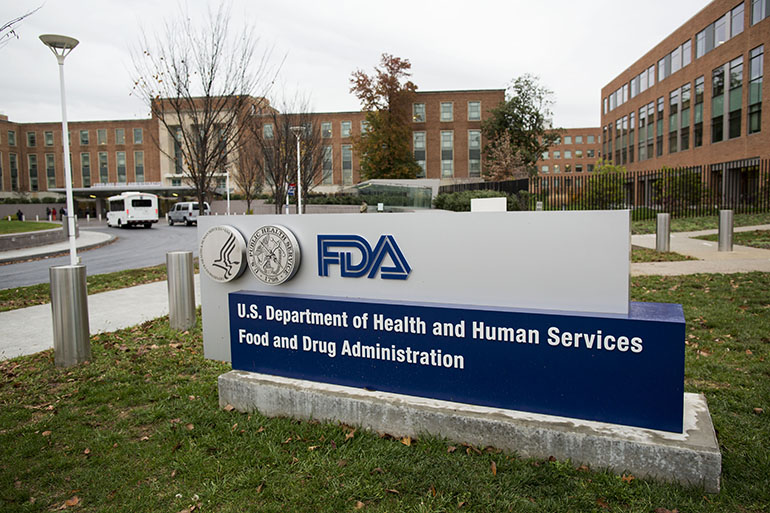More than a quarter of the Food and Drug Administration employees who approved cancer and hematology drugs from 2001 through 2010 left the agency and now work or consult for pharmaceutical companies, according to research published by a prominent medical journal Tuesday.
Dr. Vinay Prasad, a hematologist-oncologist and assistant professor at Oregon Health and Science University, sought to understand the so-called “revolving door” between the FDA and the pharmaceutical industry, which he said is often discussed but hadn’t been quantified.
“We all know about these anecdotal cases” of a person who was “often a major player at the FDA, someone in an important role — and then they leave the FDA and go and work for industry,” Prasad said, but he couldn’t find anyone who knew whether this happened “5 percent or 60 percent” of the time.
Prasad and his colleague Dr. Jeffrey Bien, an internal medicine resident also at Oregon Health, tracked 55 FDA reviewers in the hematology-oncology field from 2001 through 2010, using LinkedIn, PubMed and other publicly available job data. They found that of the 26 reviewers who left the FDA during this period, 15 of them, or 57 percent, later worked or consulted for the biopharmaceutical industry. Put another way, about 27 percent of the total number of reviewers left their federal oversight posts to work for the industry they previously regulated. They published their findings in The BMJ as a research letter.
Going to work for industry after leaving the FDA is not inherently bad, but it does raise some questions.
“If you know in the back of your mind that your career goal may be to someday work on the other side of the table, I wonder whether that changes the way you regulate,” Prasad said. “Are you more likely to give [companies] the benefit of the doubt? Are you less likely to beat them up hard over [using bad comparisons in drug studies]?”
Prasad focused his research on his own field — hematology-oncology — because it spawns a large number of new drugs and reviewers have a lot of autonomy, he said.
“There’s a lot of room for interpretation in deciding whether or not a cancer drug should be approved,” he said, because so many studies of cancer drugs rely on what’s called a “surrogate endpoint,” meaning that something other than survival or quality of life was measured to determine whether a drug worked. For example, shrinking a tumor may be a stand-in for survival. But according to one of Prasad’s previous studies, there isn’t always evidence that surrogate endpoints are linked to better health outcomes, suggesting that some approved drugs aren’t as beneficial as they appear.
“Sometimes, the public needs [the FDA reviewers] to be firm. If they’re not, no one else in the health care sector is going to be,” Prasad said, adding that once the agency approves a drug, the Centers for Medicare & Medicaid Services has to cover it and can’t negotiate prices under current laws. “The FDA is often the only real wall between ineffective, harmful drugs and patients.”
He and Brien tracked reviewers instead of higher ranking officials because reviewers provided a larger sample size, Prasad said. They would have liked to include reviewers named on denials as well, but the denial documents are secret, making it impossible to identify the reviewers.
Although Prasad said FDA reviewers have a lot of power over approvals, Dr. Joshua Sharfstein, the FDA’s principal deputy commissioner until 2011, disagreed.
“There are just so many checks and balances within the review process that it’s really not up to one person by and large,” said Sharfstein, now an associate dean at the Johns Hopkins Bloomberg School of Public Health in Baltimore. “Key regulatory decisions are looked at from many different angles. I think it would be very difficult for an individual to do something inappropriate and not have that caught.”
Sharfstein said he has met with companies to offer advice, but was not compensated for it.
The revolving door is a fair topic to study, he said, but having former FDA officials on the pharmaceutical industry payroll can have a public health benefit. Former FDA employees with deep knowledge of the approval process help make it go smoother by ensuring all the relevant research is complete and the latest pathways to approval are understood.
“Companies are very nervous about the FDA,” he said. “So they need to have an understanding of how the FDA works.”
FDA spokesman Jason Young said employees leave the government to work for industry at various agencies, not just the FDA.
“The FDA has a strong set of rules in place to ensure that our employees are working in the public interest, not to advantage any company, organization or individual,” he said, adding that these include protecting confidential information they learned at the FDA and a “cooling-off” requirement for senior officials before they can work for industry.
Former FDA Chief Dr. Margaret Hamburg, who left the administration last year, told Stat News in March that she would wait before jumping into an industry job, adding that “this perception of the revolving door is damaging to everyone” and that she would not consider “any boards of any company big or small that was regulated by the FDA for a couple of years.” She also is quoted as saying it is “unfortunate” that people think “a complete division” is necessary between the agency and the industry.
The FDA Alumni Association, whose slogan is “serving those who have served,” currently lists four job openings for former FDA employees. Three are at consulting firms and one is at a law firm seeking an “FDA compliance paralegal.” Of the consulting jobs posted, one is for a regulatory scientist and the other is for a regulatory toxicologist. The third is a food and cosmetic consulting job.
KHN’s coverage of prescription drug development, costs and pricing is supported in part by the Laura and John Arnold Foundation.







